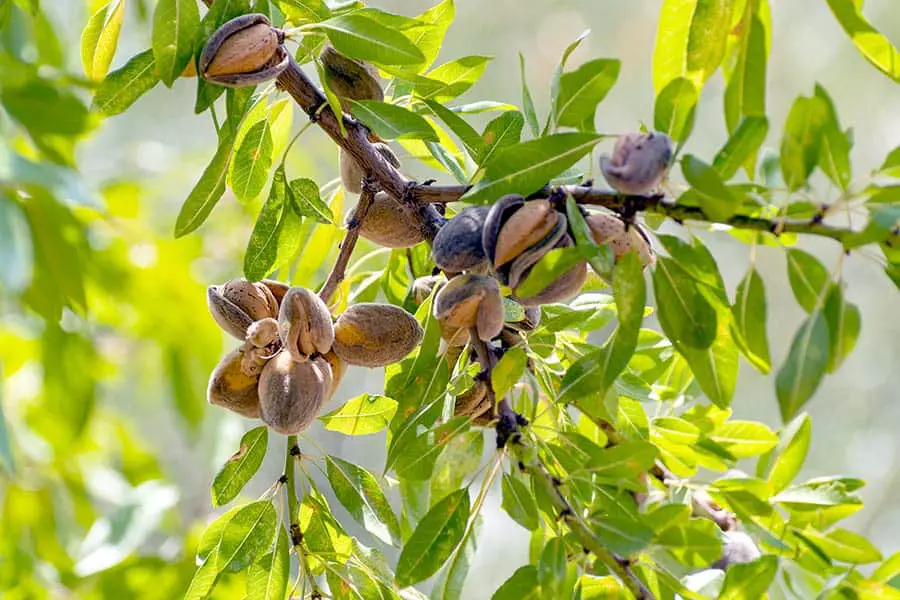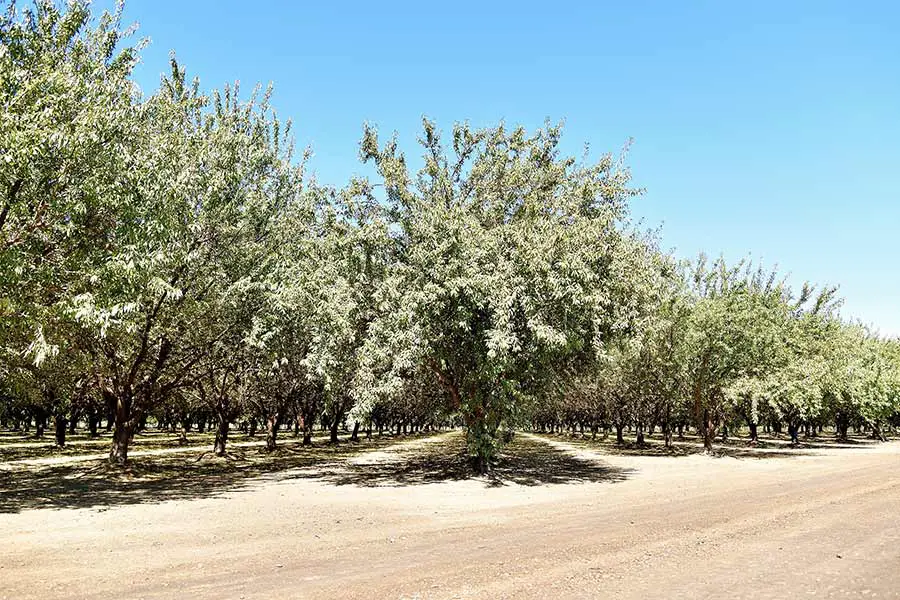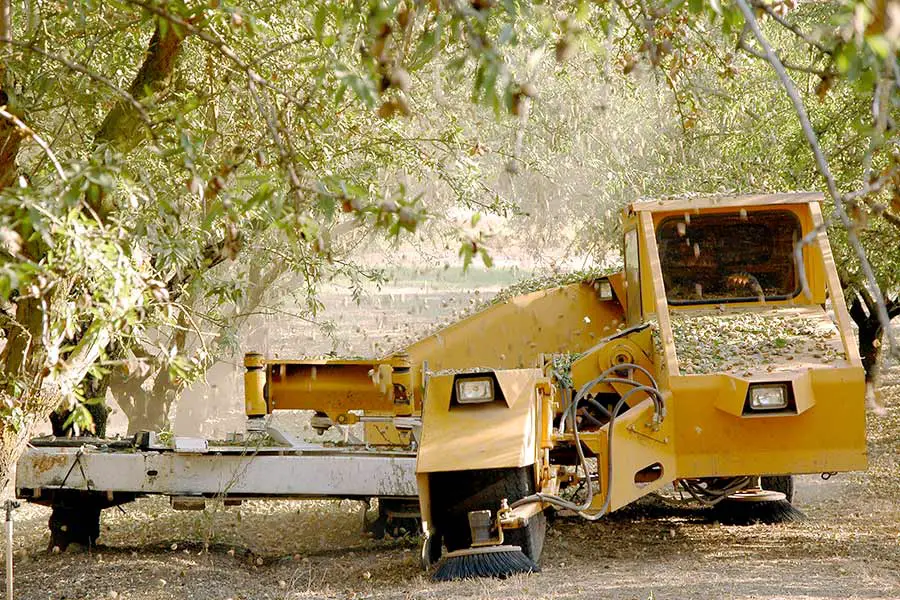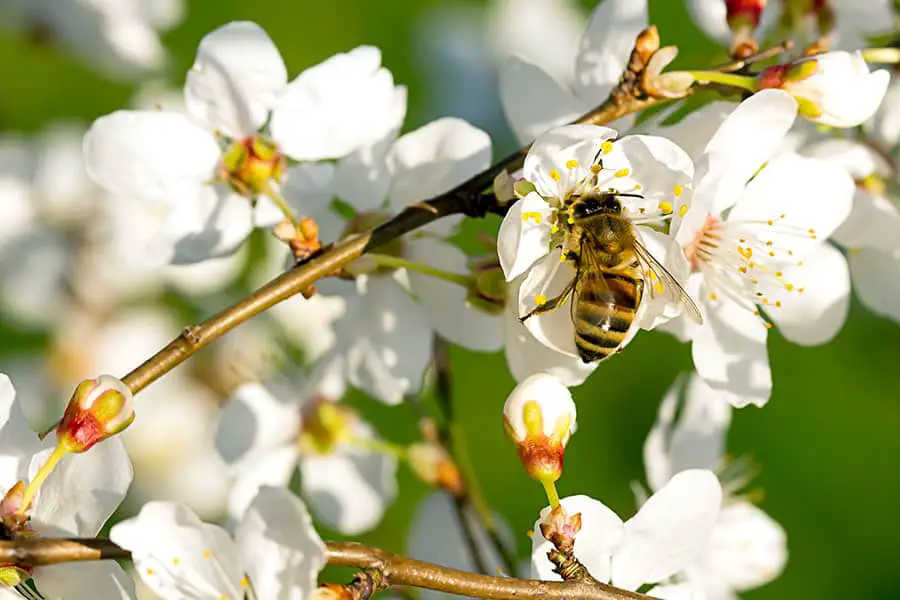
California is famously known for its wine country, so most people might assume that California’s largest agricultural crop is grapes. While that fact might have been true 20 years ago, a specific nut has become the dominant crop. So, what is California’s largest agricultural crop today?
The almond is California’s largest agricultural crop. The state produces over 3 billion pounds of these nuts each year, California supplies 100% of the US almond demand. Almonds make their way around the world, and California’s crop accounts for 80% of the global supply.
Almonds are found in many edible products on grocery store shelves across the country. Please continue reading for more information about California’s almond industry, the types of almonds available, and how the climate in the state makes it the perfect place for them to grow.
Almonds – California’s Largest Agricultural Crop
California is an agricultural powerhouse for the United States producing a third of all the vegetables and two-thirds of all fruits and nuts. Of the 400 different agricultural products, almonds are California’s largest crop. Each year, California harvests over 3.2 billion pounds of almonds which contributes over $6 billion to the US economy. This harvest requires about 68,000 people directly employed on almond farms.
Almond orchards cover approximately 1 million acres of land in California (about 1% of the entire state). Most of these orchards can be found in the Central Valley.
Almonds are the perfect crop for small family farms since one acre can yield between 1,400 to 2,600 pounds of almonds each year. About 90% of the 7,600 almond farms are family-owned and operated, many of these run by 3rd or 4th generation farmers.
Blue Diamond Growers is the largest processing and marketing company for almonds, headquartered in Sacramento.

Almonds are used to make many products, including almond milk, almond butter, baked goods, sauces, and candies. They’re also an excellent snack to eat raw. California produces enough of these delicious nuts to supply the United States with 100% of the almond supply.
California almond growers are also dominant on the world stage, supplying 80% of the almonds consumed globally. The remaining almond supply is produced in a handful of countries, including Spain, Greece, Portugal, Turkey, Morocco, Australia, and Italy, most of which enjoy a Mediterranean climate that is similar to California’s.
There are over thirty separate varieties of almonds found around the world. Each has its own characteristics, including shape, flavor, size, color, and crunchiness. Most of these almond varieties are grown in California. The most popular is the Nonpareil Almond which makes up about 40% of the total supply. It’s popular for its sweeter, mild flavor.
Where are Most of the Almonds Grown in California?
Almond farms can be found in 16 of California’s 58 counties. Most of these farms are located near Sacramento or Fresno due to their proximity to major transportation hubs.
There are five counties where the most almond orchards are found — Fresno (167,794 acres), Kern (158,680 acres), Stanislaus (120,933 acres), Merced (116,989 acres), and Madera (99,573 acres). Of all the farmers, Stewart Resnick has the single largest orchard sized at more than 30,000 acres.
Trees must be spaced out to ensure that they receive plenty of water and sunlight to produce the maximum number of almonds. Depending on soil conditions, elevation, and water availability, this spacing can vary by farm.
On average, each acre can hold about 110 almond trees. Based on this figure, California’s total number of almond trees is approximately 120 million.

Why Are There So Many Almond Trees in California?
While California is the world’s largest almond producer, it’s important to note that almonds are not native to the state. Instead, almonds were originally native to the area which makes up modern-day Iran and the surrounding countries.
Almonds, which were a popular ingredient in Spain, made their way to California by way of Franciscan padres that built missions throughout the state during the 1700s. The Franciscans found that the mild California climate was a perfect environment for almond growing. The soil is rich, and there is an abundance of sunshine and water.
Water usage for almond farming has been a controversy in California for years. Despite the fact that almonds create a lot of economic benefits, they have helped contribute to the drought conditions in recent years since almond farming utilizes about 10% of California’s water supply each year.
Bay Area Answers Fun Fact: It takes roughly 1 gallon of water to produce a single almond.
Other Posts of Interest
- What Is Alcatraz Used For Now?
- How Do You Get Around On Angel Island?
- What Is The Name Of The Submarine In San Francisco?
- Is Sausalito Worth Visiting?
How Many Almonds are Harvested in California?
The demand for most nuts has remained relatively stagnant over the last two decades. The exception has been almonds.
Almonds have been popularized as an excellent snack for the increasingly health-conscious consumer. As a result, almond consumption and demand have significantly outpaced other similar products, including hazelnuts, pecans, walnuts, macadamias, and pistachios.
California is famous for its many wine regions. However, until 2016, grapes were the most prominent agricultural product in California when almonds took the number one spot. The 3.2 billion pounds of almonds that are produced each year is expected to continue to increase approximately 3% year over year.
How Many Almonds Can a Tree Produce?
Almond trees are deciduous trees that grow to 13-33 feet with a trunk diameter of roughly 12 inches. Almond orchards are easily recognized in the late winter (February and March) when the tree blooms with white or pale pink flowers.

The average, mature almond tree can be expected to produce between 50 to 65 pounds of nuts each year. However, the first nuts don’t appear until the tree has reached the age of five to twelve years. This delay creates a challenge for almond farmers.
The planting and care of new trees must be planned carefully. If the market shifts negatively, the almond farmer could easily waste years caring for young trees with no way of selling the crop.
Almonds begin forming on the branches from March until June. By August, they are ready to harvest. Almond harvesting typically runs between August and October.
Farmers use a special machine that shakes the branches. Then, the nuts are left to dry in the sun for 7-10 days before they are swept up in another giant machine and shipped off to processing facilities.
How Long Does an Almond Tree Live?
The average almond tree can live 25-30 years. Over its lifetime, it can produce between 1,500 to 2,500 pounds of almonds. There are some pests, diseases, and natural conditions that can shorten the lifespan of an almond tree. However, the most significant risk is drought since almond trees require a lot of water.
If you are looking to grow your own almond tree, they are relatively easy to care for and maintain if you live in the right climate zone. While starting from a raw nut is possible, starting from a sapling is more reliable.
One thing to know is that almond trees are not self-pollinating, which means that they rely on pollen from other almond trees to produce nuts. So, at a minimum, you’ll need at least two trees.

Also, because pollination is so vital for the almond crop, farmers rely on insects such as bees to help move pollen around the orchard.
Since there aren’t enough bees in the native population to accomplish this feat, honeybees are often shipped in from across the country for months at a time. Shipping is controversial since many bees die in transit. It also reduces bee populations in other states, which can harm local plant life.
What Do They Use Almond Shells For?
Almond farmers and processors work diligently to make sure that the whole almond is used. But unfortunately, while the inside nut is delicious and edible, the outside shell is not.
These shells are often shipped back to the orchards to be used as fertilizer which places potassium back into the soil. In addition, shells are also used to nourish other fields and home gardens across “almond country.”
California is a major dairy producer. The hulls and shells of almonds can also be used for bedding or mixed into feed for livestock.
Almonds – The All-American Nut
Almonds will continue to be a dominant nut for years to come. It’s hard to visit a grocery store and not find many products that contain almonds. So, the next time you purchase a product that contains almonds, think of the sunny state where they were grown.





